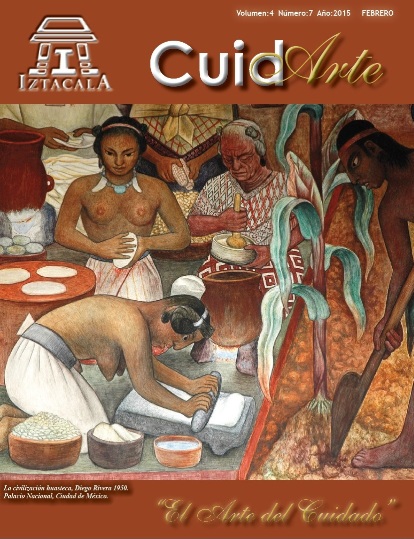Nursing students' attitude towards scientific research.
Main Article Content
Abstract
Downloads
Article Details
Citas en Dimensions Service
References
(1) Básica de Investigación en Enfermería. España: Ediciones Díaz de Santos. 2004. p. 11-18.
(2) Santos HF, Rodríguez AC, Rodríguez BR. Metodología básica de investigación en enfermería. España: Díaz de Santos; 2004.
(3) Comisión Permanente de Enfermería. Lineamientos para la Conformación de Unidades de Investigación de Enfermería. Subsecretaría de Integración y Desarrollo del Sector Salud. Dirección General de Calidad y Educación en Salud. Dirección de Enfermería. Secretaría de Salud; 2013.
(4) Facultad de Estudios Superiores Iztacala. UNAM. Carrera de Enfermería. Plan de Estudios [Internet]. UNAM; 2014 [citado 21 de febrero de 2014]. Recuperado a partir de: http://enfermeria.iztacala.unam.mx/enf_planest.php
(5) Universidad Autónoma del Estado de México. Licenciatura en Enfermería. Plan de Estudios [Internet]. Secretaría de docencia. Dirección de Estudios Profesionales; 2014. Recuperado a partir de: http://dep.uaemex.mx/curricular/sitio_/index.php
(6) Universidad Autónoma de Nuevo Léon. Licenciatura en Enfermería (Estudios por competencias) [Internet]. 2011. Recuperado a partir de: http://www.uanl.mx/oferta/licenciatura-en-enfermeria-%28estudios-por-competencias%29.html
(7) Alonso TJ. Formación científica en Enfermería. Un concepto que debe evolucionar. Cuidarte «El arte del cuidado». 2014;3(6):8-13.
(8) Alonso TJ. Diseño y validación de un instrumento para medir la formación científica en estudiantes de Enfermería. [Doctorado]. [México]: UNAM; 2014.
(9) Pulido, JE. Enseñanza de la Estadística a partir de la actitud del alumno. Laurus, Revista de Educación. 2009;15(30):42-70.
(10) Prince, M, Felder R, Brent R. Does faculty research improve undergraduate teaching? An analysis of existing and potencial synergies. Journal of Engineering Education. 2007;96(4):283-94.
(11) Rojas M. Formar investigadores e investigadoras en la universidad: optimismo e indiferencia juvenil en temas científicos. Revista latinoamericana de ciencias sociales, niñez y juventud. 2009;7(2):1595-618.
(12) Rojas-Betancur M, Méndez-Villamizar R. Cómo enseñar a investigar. Un reto para la pedagogía universitaria. Educ Educ. 2013;16(1):95-108.
(13) Dawes, RM. Fundamentos y técnicas de medición de actitudes. México: Limusa; 1983.
(14) Summers, GF. Medición de actitudes. México: Trillas; 1976.
(15) Supo J. Seminario de investigación científica. [Internet]. Arequipa, Perú.: Bioestadistico.com; 2012. Recuperado a partir de: http://seminariosdeinvestigacion.com/sinopsis
(16) Supo, J. Cómo elegir una muestra. Técnicas para seleccionar una muestra representativa. Arequipa, Perú.: Bioestadísticco Eirl; 2014.
(17) Hernández SR, Fernández CC, Baptista LP. Metodología de la investigación. Quinta edición. México: McGraw-Hill/Interamericana editores; 2010. 613 p.
(18) Supo J. Cómo validar un instrumento. Arequipa, Perú.: Bioestadistico.com; 2013.
(19) Alonso TJ. Diseños en investigación y estadística aplicada.México: Facultad de Estudios Superiores Iztacala, UNAM; 2010, p207.

